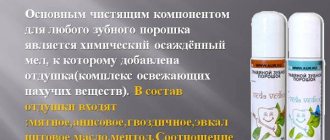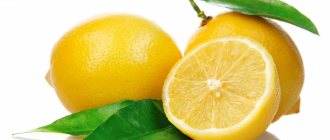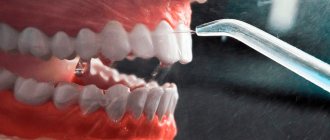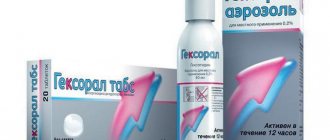A radiant smile is an important component of the image of a successful, self-confident person. She attracts the attention of colleagues, friends, and even ordinary passers-by. It's not surprising that many people want to get it. And dentists are always ready to offer many ways to fulfill this desire. Doctors and scientists are offering increasingly simpler and more convenient methods of in-office and home whitening. Today, everyone can easily choose a comfortable option that is optimal in price.
One of the most affordable so far is teeth whitening powder. Once upon a time, powders were the main means for dental hygiene, then they were replaced by pastes. This happened also because they were not suitable for daily use, as they contained coarse abrasives. These products caused a lot of harm to tooth enamel, as they violated its integrity, leaving scratches on the surface.
Let's figure out how modern whitening powders differ from their predecessors. Is it worth using them and how to use them correctly.
Types of teeth whitening in dentistry
Professional teeth whitening involves performing procedures in a dental office and under the direct supervision of a specialist. In this case, mechanical or chemical effects may be exerted on the tooth enamel. The effectiveness of the latter can be enhanced by the penetrating ability of ultrasound, laser or light, which act as an activator and conductor for the reagent that penetrates deep into the enamel.
Today there are a number of popular whitening methods, each of which has its own advantages and disadvantages. Their descriptions will help you give preference to one or another procedure.
Photobleaching
One of the “youngest” whitening methods. During its use, a special whitening gel is applied to the visible surface of the teeth, with a minimum concentration of hydrogen peroxide, which, under the direct influence of light emitted by a halogen lamp, is activated and penetrates deep into the enamel, while breaking down its pigment plaque. This procedure is often called ZOOM whitening, since the ZOOM-4 series device can be used for it. You can sign up for a whitening procedure using the ZOOM-4 device on our website
Advantages
- Quick visible effect.
- Suitable for patients with sensitive tooth enamel.
- If you follow the dentist's recommendations, the effect lasts up to 2 years.
Flaws
- The duration of the procedure is 1.5 – 2 hours in the dentist’s chair.
- Unpleasant taste in the mouth after the procedure.
- There may be an effect of “unnatural whiteness” of teeth, with a blue tint.
Flaws
Despite the huge number of advantages, such as the simplicity of the technique, its accessibility and quick effect, whitening with a gel also has some disadvantages:
- Possibility of additional destruction of enamel if it gets into unclosed carious cavities, microcracks and wedge-shaped defects in the teeth.
- The risk of developing irritation of the mucous membranes of the oral cavity due to careless application of the gel or its leakage.
- If the drug is accidentally swallowed, a burn to the mucous membrane of the pharynx and esophagus is possible.
- Allergic reactions may develop to the components of the whitening gel.
But if the whitening technology and precautions are strictly followed, the use of gels is absolutely safe.
Air Flow
This is a mechanical cleaning of enamel that effectively removes plaque and hard deposits (tartar) from the surface of teeth. To carry it out, Air flow sandblasting equipment is used, which supplies the enamel surface with a high-pressure stream consisting of water, an abrasive substance and air. Common soda crystals are used as an abrasive, destroying dental plaque and polishing enamel. Learn more about Air Flow teeth brushing.
Advantages
- During the procedure, tartar is removed, a common cause of caries.
- Ability to clean hard-to-reach places.
Flaws
- Lightening by only 2 - 3 tones.
- During the procedure, patients with sensitive enamel experience pain.
Advantages and disadvantages of tooth powders
The principle of action of tooth powders continues to this day. All compositions contain various abrasives, usually chalk, but today various minerals, essential oils and plant extracts are added to them, this gives the powders the following advantages:
- the effect of herbal supplements helps reduce periodontal inflammation;
- swelling and bleeding of the gums decreases;
- when using the powder, normalization of the acid-base balance in the oral cavity is noted;
- The powder perfectly removes soft plaque and prevents the formation of tartar;
- during cleaning, the enamel is saturated with minerals, which is an effective prevention of caries;
- The cleaning procedure is very simple and does not require additional instructions.
But if you plan to use tooth powder, keep in mind that the product also has its disadvantages:
- The whitening effect is mainly achieved through abrasive, so if you apply the powder too often, there is a high risk of damaging the outer layer of the crown, which will increase the risk of caries and contribute to other unpleasant consequences.
- Due to the powder form, some fillers cannot be added to the composition, which could enhance the whitening effect.
- The powder is stored in unsealed packaging and in order to brush your teeth you will have to dip the brush into the mass several times, so the packaging should only be used by you. Dipping an unclean brush into the powder promotes the proliferation and accumulation of bacteria, which then enter the oral cavity.
- This product can only be used by people with normal tooth sensitivity.
- Essential oils that are part of the powder can cause allergies and irritation. If you notice this, stop using the product and contact a specialist.
Chemical bleaching
The name of the method speaks for itself and involves applying a special chemical based on hydrogen peroxide to the visible surface of the teeth. Penetrating deep into the enamel, it destroys pigment molecules, and teeth become 4 to 10 shades lighter.
Advantages
- Quickly achieve the desired effect.
- A long-term result, which, if the recommendations are followed, can last for 1.5 years.
Flaws
- Tooth enamel becomes more sensitive.
- If the gums are poorly insulated during the procedure, they can get burned.
How the result is achieved
People who have used teeth whitening powder compare its effect to that of professional cleaning. The fact is that the powder does not allow achieving pronounced whiteness, but it returns the enamel to its natural color. At the same time, he polishes the surface of the crown, making it smooth and shiny.
The principle of operation of the powder is very simple - it consists in the fact that abrasive particles mechanically remove soft and hard deposits from the surface of the teeth, and also clean off the pigmented layer.
The main component of the powders is chalk, which is not only capable of removing plaque, but also has remineralizing properties.
To enhance the whitening effect, manufacturers add various components to the powder. One of the most popular options is lemon essential oil. The substances contained in its composition neutralize pigments. In addition, the composition includes bicarbonate of soda, which is also an abrasive. In order for the powder to freshen breath, various plant extracts are added here: ginger, mint, cinnamon and others. For a therapeutic effect, anti-inflammatory additives of plant origin are added to the powder. Usually these are extracts of licorice, St. John's wort, nettle, etc. They reduce bleeding gums and reduce other effects that arise due to periodontal inflammation.
What is better whitening paste or powder?
Today, few people use tooth powder, since most people prefer the most common remedy - toothpaste. People think about powder when they think about lightening enamel. As a bleaching agent, it can be much more effective than paste, due to the fact that the concentration of abrasive elements is much higher. Solid particles make it possible to loosen deposits much faster and remove the colored layer of the crown. Therefore, those who strive to quickly achieve the desired result turn to tooth powder. But it is worth remembering that this product should be used very carefully, as it can greatly harm the health of the enamel.
If you want to achieve a noticeable and long-term effect without risking the integrity of your teeth, you can choose the professional whitening paste “ASEPTA PLUS” GENTLE WHITENING. This safe and effective product will help neutralize surface staining of enamel. The advantages of the paste are that in just four weeks you will get visible results without damaging your teeth. The paste contains potassium citrate and hydroxypatite, which mineralize the enamel and prevent hypersensitivity. Extracts of calamus and eleutherococcus strengthen the gums and accelerate the restoration of the mucous membrane.
If you want, you can use the paste and powder together.
Recommendations for using teeth whitening powder
In order to achieve the desired result without damaging tooth enamel, you need to take into account the features of the product and follow simple recommendations:
- It is highly advisable that your dentist select the powder, since when choosing, he will take into account the general condition of the gums and teeth.
- Try not to dip a wet brush into a box of powder, as the remaining mixture will partially absorb moisture, which may affect its properties. It is best to dilute the powder in a separate container each time before applying it to the brush until it becomes a thick paste.
- To minimize the risk of injury to the enamel, use a brush with soft bristles.
- Do not use the product for more than ten days.
- After you have brushed your teeth, use a special rinse that helps restore enamel after intensive brushing. An additional bonus will be fresh breath, which will especially please people who smoke. Since powder does not always cope well with this task.
How to clean
The procedure itself is not much different from daily brushing with regular toothpaste. It should also be done twice a day, morning and evening. The duration of one cleaning should be at least 3-4 minutes.
The process itself consists of the following stages:
- Apply the powder to a dampened brush;
- start cleaning from the front crowns, all movements should be very careful;
- you should move the brush along a vertical plane, this will significantly reduce the risk of scratching the enamel;
- continue brushing for at least two minutes;
- Apply a new portion of powder to the brush and repeat the cleansing movements for another 2 minutes.
- After the procedure, rinse your mouth thoroughly to thoroughly remove any remaining product;
- Rinse your mouth with a special mouthwash.
Tooth powder can be used as a dental treatment. To do this, you need to dilute the substance to a liquid porridge and carefully apply it with a swab to the crowns and gums. Next, you need to wait 10 minutes and rinse off the composition with boiled water; this procedure can also be combined with standard brushing of teeth using toothpaste.
How to save the effect
During and after whitening procedures, you should take more careful care of your teeth. The fact is that no matter how careful you are, abrasive substances will still have a negative effect in addition to the benefits. In some cases, tooth sensitivity to hot and cold foods may increase. This should go away quickly, but if sensitivity continues to increase, be sure to consult a specialist. The same should be done if pain, gum irritation, allergies and other problems occur.
In addition, for the effect to be noticeable, it is necessary to limit the consumption of foods containing large amounts of coloring substances. Temporarily eliminate the following foods and drinks from your diet:
- Black tea, coffee, red wine, colored lemonades;
- Berries - blueberries, blackberries, sea buckthorn, etc.;
- Lemons and oranges;
- Chocolate;
- Etc.
Also, if you smoke, you should reduce the number of cigarettes you consume per day as much as possible.
In addition, it is useful to have a professional hygienic cleaning done once or twice a year. It is recommended by WHO, as it not only preserves dental health, but also improves the body’s immunity.
This procedure can be performed in several ways, two of the most common:
- Cleaning using an Air Flow device, which delivers a stream of water with a fine abrasive under pressure. This procedure allows you to get rid of soft plaque and neutralize yellowness.
- Ultrasonic cleaning removes not only soft plaque, but also tartar.
Both procedures are safe and effective. With their help, you can reveal the natural color of the enamel, getting rid of unwanted accumulations.
Alternative options
If you want to achieve a snow-white smile, you should see a dentist. The fastest and most effective methods here will be in-office whitening methods, which are carried out using a laser, cold LED lamps, ultraviolet light, etc. The essence of this whitening is approximately the same: a special gel based on hydrogen peroxide is applied to the teeth, and it is exposed to light, activating oxygen. It is this that neutralizes the yellow pigment on the enamel.
Additionally, there are many professional at-home whitening methods available. In this case, a series of procedures is also carried out using a gel, only the concentration of the active substance in it is much lower. Because of this, the whitening period is significantly extended, but each procedure is more gentle. For home whitening, the dentist prepares special trays that follow the shape of the teeth. These mouth guards contain the active substance. It is often left overnight.
ASEPTA for healthy whitened teeth
A series of professional ASEPTA products for the care and treatment of teeth and gums will help you restore enamel weakened after whitening, eliminate inflammation of soft tissues, and reduce bleeding gums. The complex includes effective toothpastes, rinses and vitamins. You can easily choose the best option.
Ultrasonic whitening
The use of ultrasound in combination with special pastes and gels based on oxidizing agents, which are pre-applied to the visible surface of the teeth, gives a fairly good result and will lighten the enamel by 2 - 3 tones.
Advantages
- The method is suitable for patients with sensitive tooth enamel.
- No pain.
Flaws
- To achieve maximum effect, several procedures will be required.
Whitening with a discount of 5000 rubles!
Moscow
How to choose the best dental whiteners?
All teeth whiteners are effective when used correctly. Certain types have many additional features. In general, the choice depends on the expected results. Some of them remove plaque from the surface of teeth quickly, others more slowly, but more effectively. Some products further strengthen the enamel (its hardness) or reduce susceptibility to tooth decay. They also have antibacterial and anti-inflammatory effects. When choosing a product you should:
- Read the instructions in detail to ensure that the purchased product meets your expectations and individual care needs.
- Mouthguards should be predominantly silicone. This flexible material fits perfectly over your teeth and fits comfortably in your mouth.
- The water resistance of the pads ensures their correct and safe cleaning, as well as repeated use.
- An additional advantage is the whitening scale indicator, which allows you to independently measure the quality of teeth whitening.
Teeth whitening products are based on dental research that indicates the expected results from their use. It is worth choosing a product that satisfies several basic criteria:
- easy way to apply to teeth;
- fast action (one-time whitening 10-15 minutes);
- visible effects after the first use;
- equipping the activator with a timer signaling the end of treatment;
- the shape of the onlays, ensuring the application of the same amount of gel to the upper and lower parts of the jaw.
It is worth remembering that finishing the whitening procedure does not mean you can stop taking care of your teeth. First of all, you should remember about proper oral hygiene and brushing your teeth at least twice a day. After completing your whitening cycle, be sure to also follow the “white diet.” Because enamel may weaken after bleaching, it is more susceptible to discoloration caused by eating colored foods.
Endobleaching
Endodontic lightening of tooth enamel (or as it is often called intracanal whitening) is a labor-intensive procedure that allows you to lighten pulpless teeth and teeth with cracks on the enamel surface. The problem is that, being damaged, they darken from the inside over time and a superficial effect on the enamel in this case does not have a positive effect. Therefore, to lighten them, a special whitening gel is introduced into the tooth cavity, followed by a filling.
Advantages
- The method allows you to lighten damaged teeth and enamel.
- Painless procedure.
- It is possible to lighten the enamel by 8 – 10 tones.
- You can lighten only one or two affected teeth.
Flaws
- Tooth tissues become more fragile.
- To achieve maximum effect, 2–4 procedures will be required.
Clinical researches
Asept products have proven effectiveness. For example, clinical studies have proven that regular use of professional toothpaste ASEPTA GENTLE WHITENING for a month allows you to lighten tooth enamel by 1.5 tones, increases anti-caries effectiveness by 3.4 times and increases enamel remineralization by 2.6 times.
Sources:
- Report on determining/confirming the preventive properties of toothpaste “ASEPTA PLUS” GENTLE WHITENING” Author: doctor-researcher A.A. Leontyev, head Department of Preventive Dentistry, Doctor of Medical Sciences, Professor S.B. Ulitovsky First St. Petersburg State Medical University named after. acad. I.P. Pavlova, Department of Preventive Dentistry
- Clinical and laboratory assessment of the influence of domestic therapeutic and prophylactic toothpaste based on plant extracts on the condition of the oral cavity in patients with simple marginal gingivitis. Doctor of Medical Sciences, Professor Elovikova T.M.1, Candidate of Chemical Sciences, Associate Professor Ermishina E.Yu. 2, Doctor of Technical Sciences Associate Professor Belokonova N.A. 2 Department of Therapeutic Dentistry USMU1, Department of General Chemistry USMU2
- Report on the determination/confirmation of the preventive properties of personal oral hygiene products “ASEPTA PLUS” Remineralization doctor-researcher A.A. Leontyev, head Department of Preventive Dentistry, Doctor of Medical Sciences, Professor S.B. Ulitovsky First St. Petersburg State Medical University named after. acad. I.P. Pavlova, Department of Preventive Dentistry
- Clinical studies of antisensitive toothpaste “Asepta Sensitive” (A.A. Leontyev, O.V. Kalinina, S.B. Ulitovsky) A.A. LEONTIEV, dentist O.V. KALININA, dentist S.B. ULITOVSKY, Doctor of Medical Sciences, Prof. Department of Therapeutic Dentistry, St. Petersburg State Medical University named after. acad. I.P. Pavlova
- The role of anti-inflammatory rinse in the treatment of periodontal diseases (L.Yu. Orekhova, A.A. Leontyev, S.B. Ulitovsky) L.Yu. OREKHOVA, Doctor of Medical Sciences, Prof., Head of Department; A.A. LEONTIEV, dentist; S.B. ULITOVSKY, Doctor of Medical Sciences, Prof. Department of Therapeutic Dentistry of St. Petersburg State Medical University named after. acad. I. P. Pavlova
- Report on determining/confirming the preventive properties of toothpaste “ASEPTA PLUS” COFFEE and TOBACCO Author: doctor-researcher A.A. Leontyev, head Department of Preventive Dentistry, Doctor of Medical Sciences, Professor S.B. Ulitovsky. First St. Petersburg State Medical University named after. acad. I.P. Pavlova, Department of Preventive Dentistry
- Report on determining/confirming the preventive properties of commercially produced personal oral hygiene products: Asepta toothpaste used in combination with Asepta mouthwash and Asepta gum balm Head. Department of PFS Doctor of Medical Sciences Professor S.B. Ulitovsky St. Petersburg State Medical University named after Academician I.P. Pavlova. Faculty of Dentistry. Department of Preventive Dentistry.
Laser whitening
One of the most popular methods of enamel lightening. During his procedures, a whitening gel is applied to the surface of the teeth and exposed to a laser, which activates the formula.
Advantages
- Quick visible effect.
- Lightening of enamel by 6 – 10 tones.
- Bactericidal properties of the procedure.
- If you follow the dentist’s recommendations, the effect lasts for 1.5 – 2 years.
Flaws
- During the first day after the procedure, the sensitivity of tooth enamel increases.
Absolutely all professional teeth whitening procedures have contraindications. Therefore, before carrying out them, you need to consult with your attending physician and dentist.
Side Effects of LED Teeth Whitener
As long as you follow the instructions, these devices are completely safe to use. However, you need to take a few precautions to avoid any side effects.
- If you do not use the right amount of whitening gel, you may experience sensitivity in the exposed area.
- If you have sensitive teeth, avoid using high doses of whitening gel as this may worsen the sensitivity.
- If you do not spread the gel evenly throughout the tray, it can damage your gums and cause inflammation, burning or redness.
- If the whitening system is not suitable for your sensitivity level, it may damage the enamel of your teeth.
Whitening Pencil
The active ingredient in whitening pencils is still hydrogen peroxide. To lighten the enamel, a light gel is applied to the visible surface of the teeth using a special pencil applicator and left for the time specified in the instructions, after which the mouth must be rinsed thoroughly.
Indications and contraindications
The use of gel whitening is advisable in the following cases:
- Darkening of tooth enamel after drinking coffee, red wine or smoking.
- Changes in tooth color under the influence of medications (antibiotics, fluoride preparations).
- Natural yellowish or gray tint of enamel.
This type of bleaching is contraindicated:
- For acute diseases of periodontal tissues.
- For diseases of the gums or oral mucosa.
- In the presence of unclosed carious defects.
- If the patient previously had allergic reactions to any components of the gel.
Whitening strips
The principle of operation of the strips is very similar to the mechanism of a pencil. These are special soluble or insoluble strips that are fixed on the visible surface of the teeth in the smile area and left for the recommended time, during which the active substance based on hydrogen peroxide penetrates the top layer of tooth enamel and brightens it.
Special toothpastes
This is the most affordable way to whiten teeth at home. As a rule, these pastes contain abrasive particles that remove plaque and polish the enamel, making it lighter.
The main advantage of all home whitening methods is that they are affordable. But with their help, it will be possible to lighten the enamel by no more than 2–3 tones, and to maintain this effect, the procedures will have to be repeated with enviable regularity.
Important to remember!
Uncontrolled use of home teeth whitening methods can damage the enamel and cause its thinning. In addition, all of them, like professional methods, have their contraindications and require prior consultation with a dentist.
Is teeth whitening harmful?
The peculiarity of all whitening methods is their relative safety. On the one hand, if the patient has absolutely healthy, strong teeth, then the enamel lightening procedure, carried out once every 2-3 years, will not cause much harm. On the other hand, regular use of chemical reagents that whiten teeth causes a gradual thinning of tooth enamel and makes it sensitive. Home lightening is especially dangerous when patients use available and advertised whitening products without taking into account their specificity and the individual characteristics of their enamel.
Before you sign up for a whitening procedure, you must consult a dentist and choose a real professional to perform it. A correctly calculated concentration of the active substance applied to the enamel, the depth and time of its exposure will minimize the risk of complications after bleaching and its negative impact on the enamel.
Colgate Simply White Teeth Whitening Gel
Colgate Simply White home whitening system is a teeth whitening gel made in the USA, one of the most effective whitening products in its class. Visibly whitens teeth in just two weeks when used once a day, without damaging tooth enamel. The main whitening ingredient of the gel is 5.9% hydrogen peroxide. The composition also includes stabilizing elements (phosphates) to maintain normal acidity in the oral cavity.
After applying the gel to the teeth, it is immediately absorbed into the enamel, and the process of removing stains and yellowness begins immediately. Colgate Simply White can also be used to whiten deeper areas of enamel. To obtain the desired effect, you should refrain from eating and drinking water for only 15 minutes after applying the product to your teeth - this amount of time is more than enough for the whitening gel to adhere to the teeth and the whitening process to begin.










